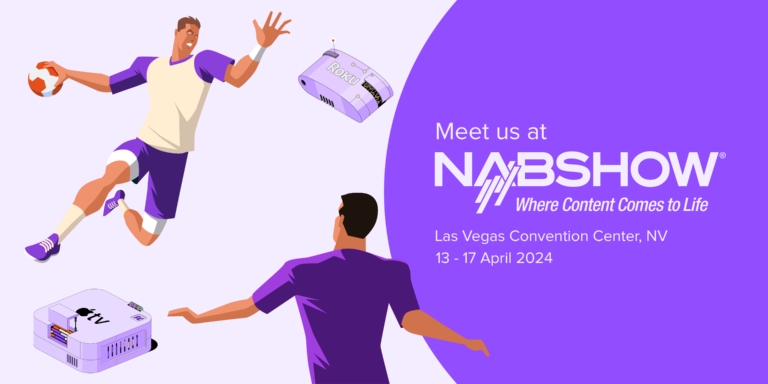Two technologies enjoying significant growth, accelerated by changing consumer trends, are streaming consumption and autonomous driving. Audiences are canceling their traditional linear cable services in their droves and shifting to consuming video over OTT. When it comes to OTT, a recent Conviva report shows us that year-on-year consumption of video over a Connected TV device (Smart TVs, consoles, streaming sticks, Set Top Boxes) is greater than both web and mobile combined.
With the success of companies such as Tesla and the significant investment that continues to be poured into the autonomous vehicle industry, many drivers look set to be making a shift to a car with some level of autonomous driving capability. The autonomous vehicle (AV) industry seems to be on a path that will reach a point whereby we are no longer required to control a car as it drives us to our destination.
At the intersection of the evolution of video consumption and autonomous driving lies 5G, a technology that promises to ‘connect virtually everyone and everything together’ and provide a seamless, low latency streaming experience.
So, what does this mean for the sports experience and Connected TV in an autonomous vehicle?
The notion that a driver may no longer be required has seen car manufacturers place more effort into reimagining the in-car experience. The recent CES 2022 was a particular hotbed for autonomous vehicle announcements. Sony unveiled the vision-S 02 concept electric SUV, with 5G driving tests having already begun in April 2021. Since CES2022, the rumours that Apple are developing an autonomous vehicle are gaining traction. If you believe the hearsay, the car manufacturer behind this could be Porsche. Not to mention that Google and Amazon are of course working on or have acquired companies that aim to build self-driving vehicles.
What’s interesting about the most recent revelations from Sony and Apple, and the efforts from Amazon and Google, is that tech and media companies have well and truly entered the space. As a result I’d expect to see some serious disruption, not just in the way a vehicle behaves, but also in the relationships we have with our vehicles.
It’s not a long shot for us to believe that today’s driving experience will largely be replaced by something entirely different, when there is no longer a requirement to be engaged in the activity of driving itself. As Sony have shown with the vision-S 2, the experience in the vehicle is likely to transform into a more casual, relaxing, and luxurious experience that is extensively personalised. Something akin to the experience you currently enjoy in your living room at home.
How closely can we compare tomorrow’s in-vehicle experience with the living room? There are very obvious differences of course. However, in the vehicle with nothing to do, while you (and perhaps friends or family) journey to your destination, it is likely that you’ll be sitting down, in a lean-back setting, enjoying some form of content that involves a screen.
Get in the driver’s seat and join the in-car entertainment raceContact us now

When it comes to Connected TV, it’s likely that larger tech companies will incorporate their own operating systems into vehicles, including Apple tvOS, Android TV, and Amazon Fire TV (Fire TV Auto already exists in some vehicles). For those that don’t have experience in this space, I’d expect them to opt for third party alternatives such as RDK, Android TV (operator tier) or perhaps Vewd for automotive.
This opens up some incredibly exciting opportunities within the Sports OTT space in particular, and of course comes with its challenges.
For the fan it means that they will be in a world whereby their next live sports match could be viewed from within an autonomous vehicle. For those fans that attend the game, how about watching the highlights reel on the way home? For sports teams and leagues it provides another setting in which to engage the fan, and they’ll need to begin to think not only about the live experience being consumed within a vehicle, but also the traveling fan experience immediately before and after a game.
For the OTT platforms it means another potential distribution method to increase reach and engagement, but with it comes a multitude of technical challenges. Perhaps most importantly, device fragmentation is likely to become more of a challenge across Connected TV, as the various devices are embedded into vehicles with the aforementioned operating systems and a variety of differing hardware resources. Combined with the reality that the average lifespan of a car is likely to be greater than the average lifespan of a Smart TV and we could find that OTT platform providers are expected to build applications that support devices that are significantly older than those they are expected to support today.
It will be interesting to see how rapidly this space develops, and I wouldn’t be surprised if many of the larger OTT platforms are already in conversation with car manufacturers and enhancing their OTT offering to incorporate this future Connected TV experience.
It’s a very exciting world we’re moving towards, but we need to tread carefully to avoid finding ourselves in a position whereby the challenges of launching an OTT application are compounded further by the ever growing problem of device fragmentation. The optimist within me believes we can move to a place where device fragmentation is less of an issue, but the realist in me is already observing it getting more complex.

